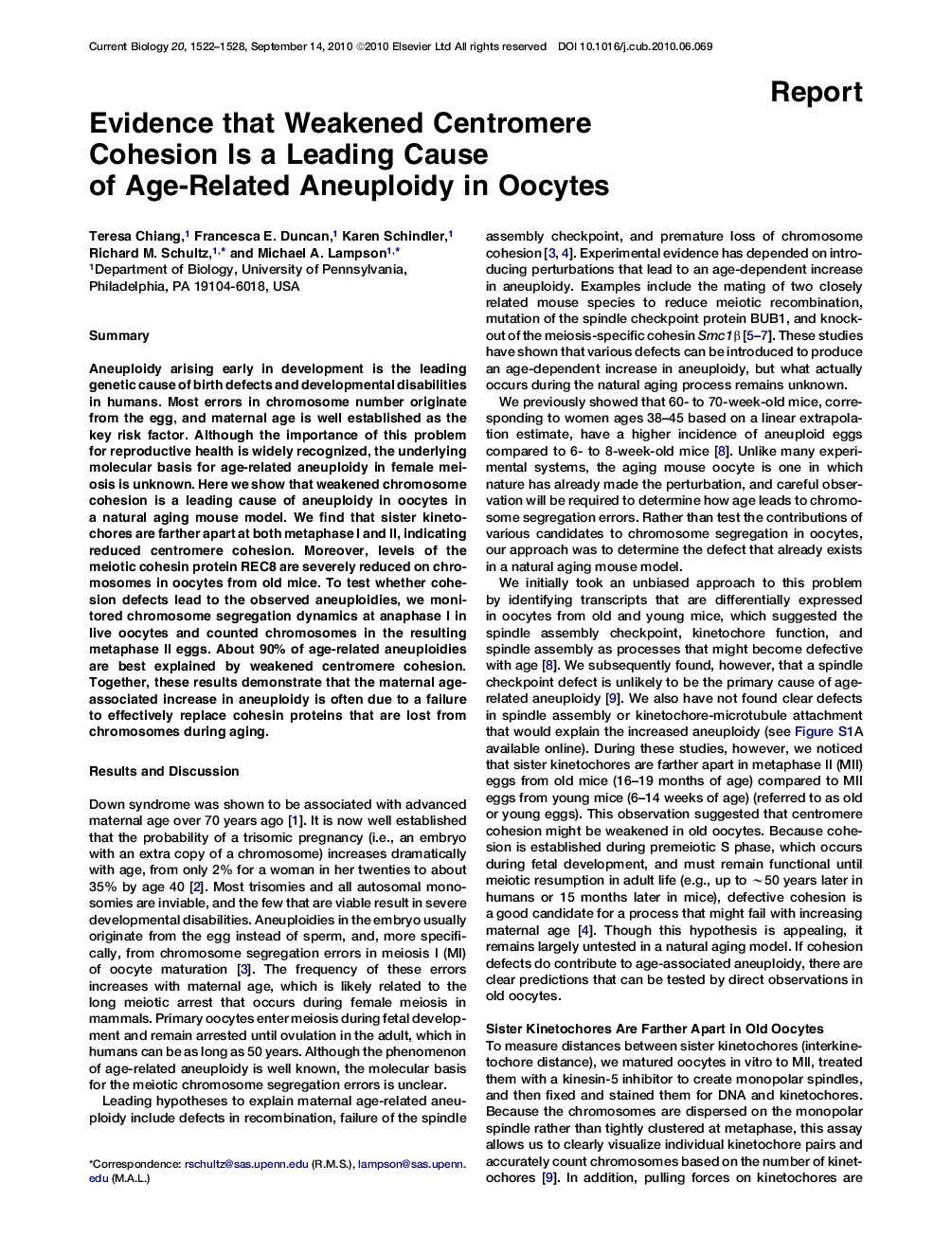| Article ID | Journal | Published Year | Pages | File Type |
|---|---|---|---|---|
| 2043427 | Current Biology | 2010 | 7 Pages |
SummaryAneuploidy arising early in development is the leading genetic cause of birth defects and developmental disabilities in humans. Most errors in chromosome number originate from the egg, and maternal age is well established as the key risk factor. Although the importance of this problem for reproductive health is widely recognized, the underlying molecular basis for age-related aneuploidy in female meiosis is unknown. Here we show that weakened chromosome cohesion is a leading cause of aneuploidy in oocytes in a natural aging mouse model. We find that sister kinetochores are farther apart at both metaphase I and II, indicating reduced centromere cohesion. Moreover, levels of the meiotic cohesin protein REC8 are severely reduced on chromosomes in oocytes from old mice. To test whether cohesion defects lead to the observed aneuploidies, we monitored chromosome segregation dynamics at anaphase I in live oocytes and counted chromosomes in the resulting metaphase II eggs. About 90% of age-related aneuploidies are best explained by weakened centromere cohesion. Together, these results demonstrate that the maternal age-associated increase in aneuploidy is often due to a failure to effectively replace cohesin proteins that are lost from chromosomes during aging.
► Sister kinetochores are farther apart in oocytes from old mice ► REC8 levels on chromosomes are severely reduced in oocytes from old mice ► Weakened centromere cohesion explains most MI chromosome segregation defects
